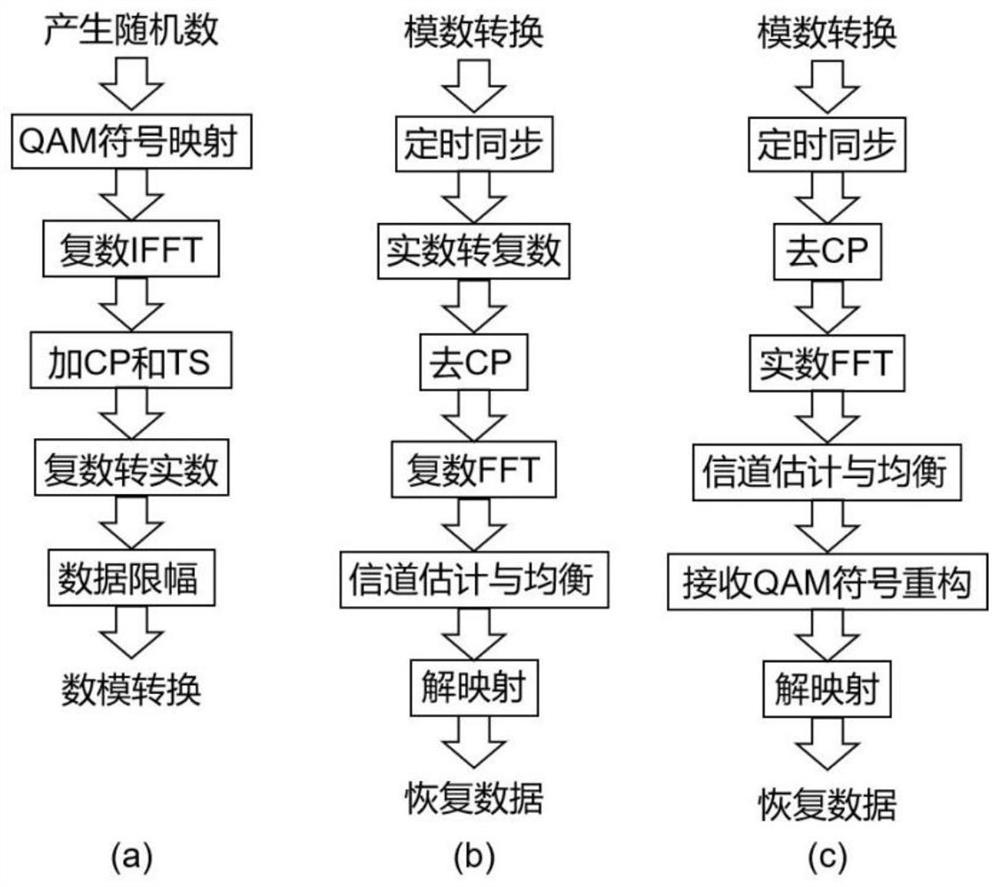Signal processing method applied to optical non-Hermitian symmetric OFDM receiver
A signal processing and receiver technology, which is applied in the field of optical communication, can solve problems such as inability to effectively improve channel estimation accuracy and large channel response differences, and achieve the effects of reducing computational complexity, improving channel estimation, and improving performance
- Summary
- Abstract
- Description
- Claims
- Application Information
AI Technical Summary
Problems solved by technology
Method used
Image
Examples
Embodiment Construction
[0029] The present invention will be further described below in conjunction with the accompanying drawings and embodiments.
[0030] Such as figure 1 As shown, a signal processing method applied to an optical non-Hermitian symmetric OFDM receiver comprises the following steps:
[0031] S1: After the timing synchronization is completed, the received time-domain real number data is grouped to obtain the real part and imaginary part data of the non-Hermitian symmetric OFDM signal, and the real number FFT operation is performed after the cyclic prefix is removed to obtain Corresponding frequency domain data.
[0032] The cyclic prefix is removed from the grouped real number data, and then the N-point real number FFT operation is performed, and the frequency domain data of the real part and imaginary part of the obtained non-Hermitian symmetric OFDM signal are respectively:
[0033]
[0034] In the formula, w Re (n) and w Im (n) respectively represent the real part x of ...
PUM
 Login to View More
Login to View More Abstract
Description
Claims
Application Information
 Login to View More
Login to View More - R&D
- Intellectual Property
- Life Sciences
- Materials
- Tech Scout
- Unparalleled Data Quality
- Higher Quality Content
- 60% Fewer Hallucinations
Browse by: Latest US Patents, China's latest patents, Technical Efficacy Thesaurus, Application Domain, Technology Topic, Popular Technical Reports.
© 2025 PatSnap. All rights reserved.Legal|Privacy policy|Modern Slavery Act Transparency Statement|Sitemap|About US| Contact US: help@patsnap.com



